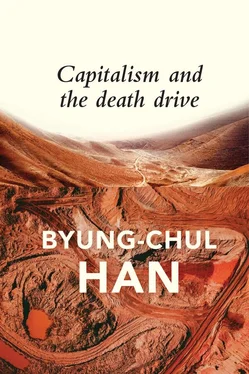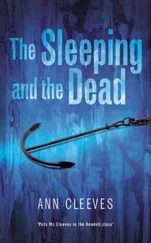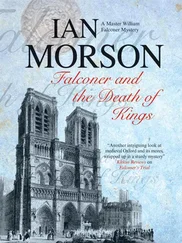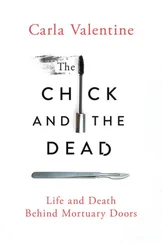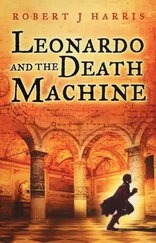‘The End of Liberalism: The Coronavirus Pandemic and Its Consequences’ appears for the first time in this volume.
‘It Is Eros That Defeats Depression’ was first published in Philosophie Magazin 05/2012 © Philosophie Magazin, Berlin 2012.
‘Capitalism Dislikes Silence’ was first published in 1. Spielzeitheft der Schaubühne am Lehniner Platz 2013/14 © Florian Borchmeyer and Thomas Ostermeier, Berlin 2013.
The interview ‘Byung-Chul Han: COVID-19 Has Reduced Us to a “Society of Survival”’ by Carmen Sigüenza and Esther Rebollo was first published on EURACTIV in May 2020 © EFE with EURACTIV.com. Reprinted with permission of EURACTIV. At https://www.euractiv.com/section/global-europe/interview/byung-chul-han-covid-19-has-reduced-us-to-a-society-of-survival(last accessed 3 December 2020).
Excerpt from ‘Tur mir Leid, aber das sind die Tatsachen’ [I Am Sorry, But These Are the Facts] by Niels Boeing and Andreas Lebert in Die Zeit , 5 (August 2014) © Die Zeit . Reprinted with permission of Die Zeit .
Capitalism and the Death Drive
What we nowadays call ‘growth’ is in reality random, cancerous proliferation. We are currently living through a frenzy of production and growth that seems like a frenzy of death. It is a simulation of vitality that conceals a deadly impending catastrophe. Production increasingly resembles destruction. Humankind’s self-alienation may have reached a point ‘where it can experience its own annihilation as a supreme aesthetic pleasure’. 1What Benjamin said of fascism is today true of capitalism.
It is on account of our destructive rage that Arthur Schnitzler compares humankind to a bacterium. From this perspective, the history of humanity is like the progress of a deadly infectious disease. Growth and destruction become one and the same:
Is it then not conceivable that, for some higher organism that we are incapable of grasping in its totality, and within which humankind finds the condition, necessity and meaning of its own existence, humankind represents an illness that tries to destroy that organism and – the further it develops – must destroy it, the same way a bacterium seeks to annihilate the human individual who has been ‘taken ill’? 2
Humankind is blighted by a deadly blindness. We can only recognize the simpler levels of organization; regarding higher orders, we are as blind as bacteria. Thus, the history of humanity is an ‘eternal battle against the divine’, which is ‘necessarily annihilated by the human’.
Freud would have shared every ounce of Schnitzler’s pessimism. The human being, with his ‘cruel aggressiveness’, he writes in Civilization and Its Discontents , is a ‘savage beast to whom consideration towards his own kind is something alien’. 3Humankind annihilates itself. Freud may occasionally speak of the capacity of reason to recognize higher orders, but ultimately the human being is dominated by drives. For Freud, the death drive is responsible for our aggressive inclinations. 4Only a few months after the completion of Civilization and Its Discontents , the Great Depression began. It would have provided Freud, one might think, with enough reasons to say that capitalism is that economic formation in which the savagery and aggression of the human being can best be expressed.
Given capitalism’s destructiveness, it seems plausible to connect capitalism with Freud’s death drive. In his study Capitalisme et pulsion de mort [Capitalism and death drive], the French economist Bernard Maris, who was killed in the terrorist attack on the offices of Charlie Hebdo in 2015, writes: ‘The great cunning of capitalism . . . lies in the way it channels, it diverts, the forces of annihilation, the death drive, toward growth.’ 5According to Maris, capitalism uses the death drive for its own purposes, and this ultimately proves to be fateful. Over time, its destructive forces gain the upper hand and overwhelm life.
But is Freud’s death drive really the right explanation for capitalism’s destructive trajectory? Or is capitalism propelled by an altogether different kind of death drive, one that lies outside of Freud’s theory of the drives? Freud’s death drive has a purely biological basis. At some point in time – so he speculates – the properties of life were evoked in inanimate matter by a strong force acting on it. This introduced into the previously dead matter a tension that had to be resolved, and thus living beings came to possess a drive to return to the inanimate condition. The death drive was born: ‘“ The aim of all life is death ”, and, looking backwards . . . “ inanimate things existed before living ones ”.’ 6Against the backdrop of the death drive, all instances of life appear as mere ‘myrmidons of death’. The drives of life have no aims of their own. Even the drives of self-preservation and mastery are partial drives whose function is ‘to ensure that the organism shall follow its own path to death, and to ward off any possible ways of returning to inorganic existence other than those which are immanent in the organism itself’. 7Every ‘organism wishes to die only in its own fashion’, and thus each organism resists any external influences that ‘might help it to attain its life’s aim rapidly – by a kind of short-circuit’. 8Life is nothing but the organism’s own being unto death. The idea of the death drive apparently held a lasting fascination for Freud. Despite some initial hesitation, he retained the idea:
The assumption of the existence of an instinct of death or destruction has met with resistance even in analytic circles; . . . To begin with it was only tentatively that I put forward the views I have developed here, but in the course of time they have gained such a hold upon me that I can no longer think in any other way. 9
The source of Freud’s fascination was probably the fact that the idea of the death drive can help to explain human beings’ destructive drive. Within the living being, the death drive works to bring about the being’s dissolution. Freud interprets this processual death as an active self-destruction. Initially, then, the death drive expresses itself in the form of auto-aggression. It is only the drive towards life, Eros, that ensures that the death drive is directed towards external objects:
In this way the instinct [i.e. the death drive – DS] itself could be pressed into the service of Eros, in that the organism was destroying some other thing, whether animate or inanimate, instead of destroying its own self. Conversely, any restriction of this aggressiveness directed outwards would be bound to increase the self-destruction, which is in any case proceeding. 10
Freud makes no distinction between human beings and other living beings when it comes to the death drive: the drive inhabits every living thing, as that being’s urge to return to the inanimate state. From the death drive, Freud deduces aggression, thereby making a connection between two very different impulses. An organism’s inherent tendency to resolve a tension and, ultimately, to die does not necessarily suggest a destructive inclination. If we understand the death drive as a gradual reduction in vitality, then we cannot infer from it any destructive impulse. In addition, because the death drive is common to all living beings, it cannot explain what is specific about human aggression. Humans, however, are especially aggressive and, in particular, cruel. No other living being is capable of blind destructive rage. Freud also deduces sadism from the death drive:
It is in sadism, where the death instinct twists the erotic aim in its own sense and yet at the same time fully satisfies the erotic urge, that we succeed in obtaining the clearest insight into its nature and its relation to Eros. But even where it emerges without any sexual purpose, in the blindest fury of destructiveness, we cannot fail to recognize that the satisfaction of the instinct is accompanied by an extraordinarily high degree of narcissistic enjoyment, owing to its presenting the ego with a fulfilment of the latter’s old wishes for omnipotence. 11
Читать дальше
